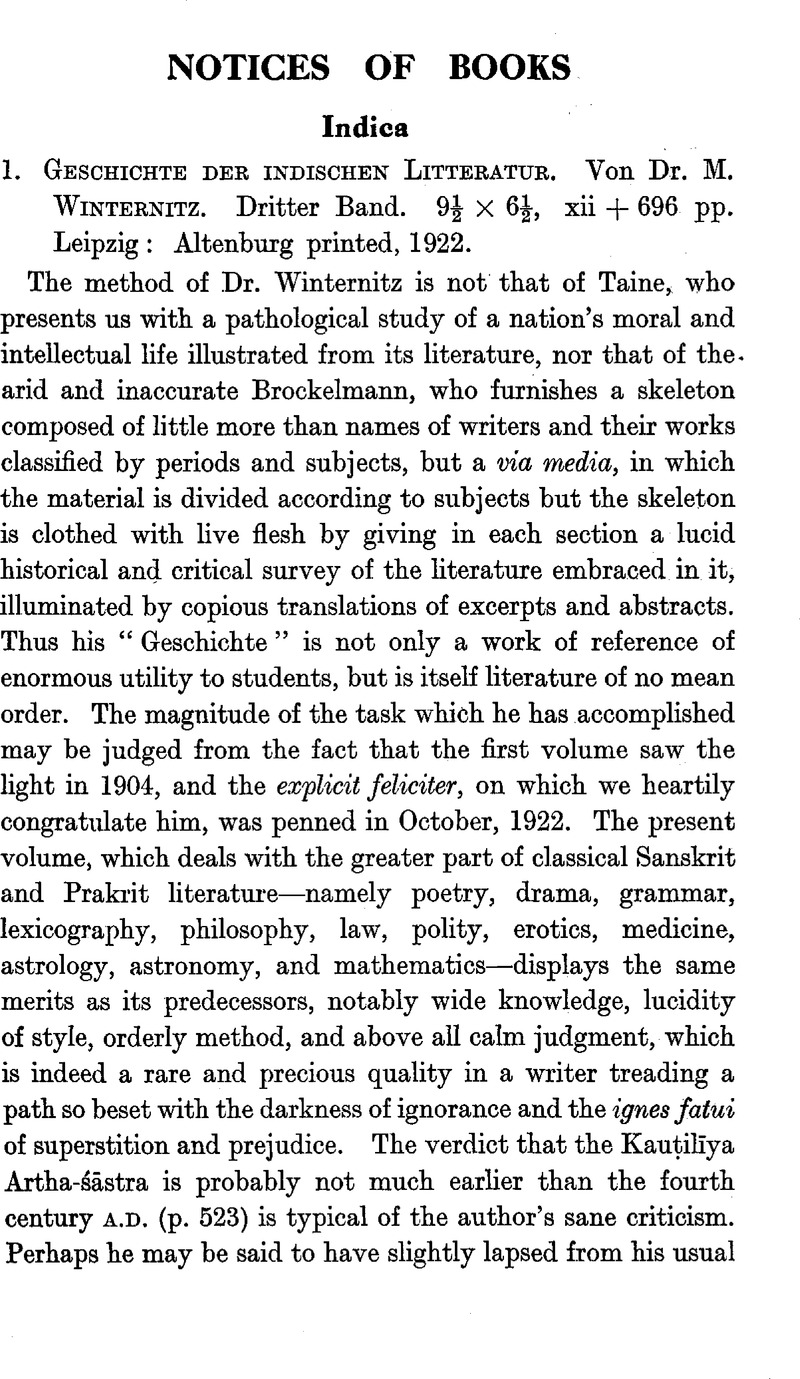No CrossRef data available.
Published online by Cambridge University Press: 15 March 2011

1 On the other hand he is perhaps a little too cautious in doubting the identity of Bhartṛhari the poet with Bhartṛhari the logician and grammarian. I-tsing relates that the latter became seven times a Buddhist monk, and as often lapsed. There is in this nothing essentially inconsistent with the experiences of the poet revealed in his verses, except that I-tsing represents him as a Buddhist and ignores his poems. A Chinese pilgrim might easily err in ascribing Buddhism to a non-Buddhist (the seven conversions and lapses are reminiscent of the tale of Cittahattha in Dhammapada-aṭṭh., iii, 6–7), and the somewhat “ high-browed ” circles with which I-tsing held converse would pay little notice to a scholar's poetical parerga. With these deductions, the story fully harmonizes with the poet's character. Lapses from the religious life were common among bhaktas, notably in the case of Māṇikka-vāchakar. The combination of parts is common in India : Caitanya gained some reputation as a logician before he became a religious singer and apostle, Śrīharṣa is as famous for his Khaṇḍana-khaṇḍa-khādya as for his Naiṣadhīya, and many respectable Jain divines have composed highly erotic poetry.
We venture to append a few respectful adversaria, p. 40: the sketch of the history of the Guptas needs some qualification since the publication of the Damodarpur plates; and it is perhaps going too far to say that Kālidāsa's description of Ujjayinī in his Mēgha-dūta leaves no doubt that it was his home (pp. 42, 44). p. 146: Gumānī's Upadēśa-śataka is not “ aus unbekannter Zeit stammend ” (see Ind. Ant., vol. xxxviii, p. 177). p. 203: the statement regarding King Śūdraka that “ his name occurs neither on inscriptions nor on coins ” is somewhat misleading; a king named Śūdraka is known from inscriptions (Ep. Ind. v, App. Nos. 642, 646), though there is no evidence to connect him with Sūdraka of the Mṛcchakaṭika. p. 213 : the name of the play should be spelt Abhijñānaśakuntalam or Śākuntalam. p. 267 : the dictum that “ the fable arose in literature itself, and in all probability belonged from the outset to Sanskrit artificial poetry”, may be right, but the proof is lacking, p. 442 : Ānandatīrtha is quite different from Ānandagiri. p. 449 : that “ the Sāṅkhya-system originally is not based like that of the Vedānta upon exposition of Scripture, but was attached later to the Veda and adopted into Brahmanism”, is quite possible, but it is not “ certain ”, pace Dr. W.